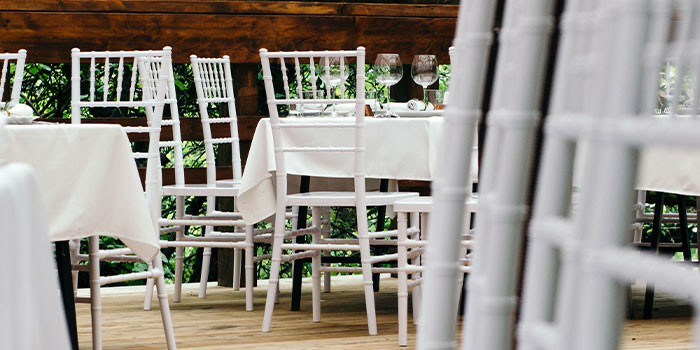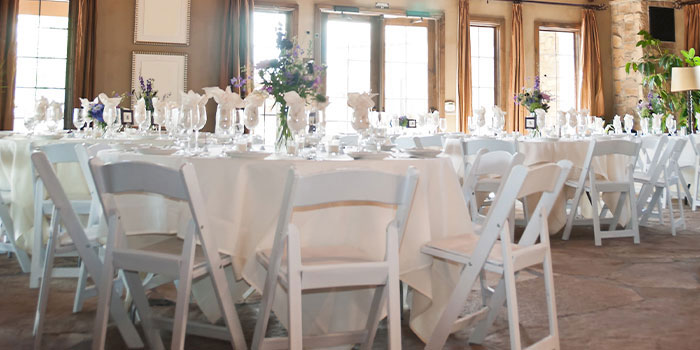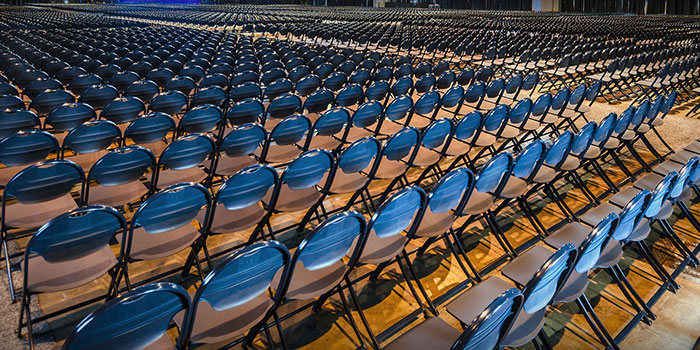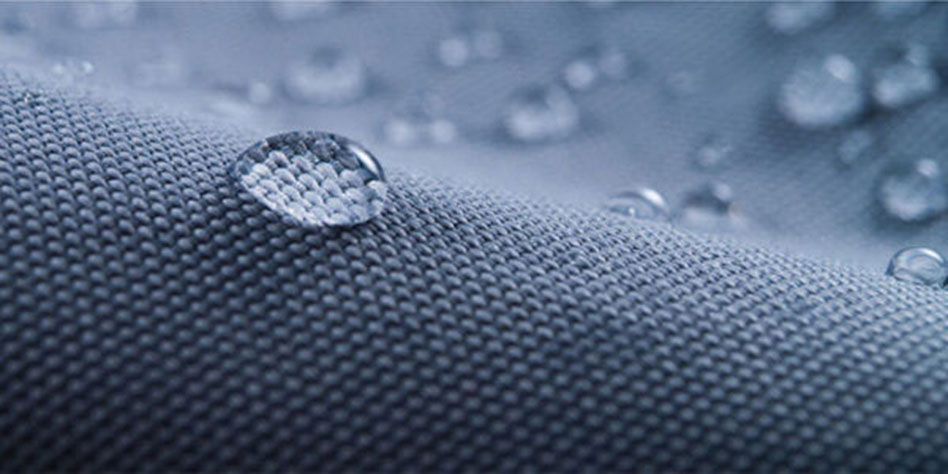
Just like the clothing you wear, chair upholstery needs to be washed. Doing some regular, light cleaning is the best way to keep your chairs looking nice.
Here you will find detailed instructions for how to clean upholstery fabric types used on MityLite chairs.
Disinfect Chair Upholstery to Prevent the Spread of Germs
Are you worried about minimizing the spread of bacteria and viruses at your events? EPA-registered désinfectants that meet the criteria for use against SARS can also be used to sanitize fabric and prevent the spread of the coronavirus and other contagious illnesses.
The Centers for Disease Control recommends using the following products to sanitize chairs and tables in public areas.
- Aseptique™
- Eau de Javel 1:10 (eau de Javel 10%)
- Spray désinfectant Bleach-Rite®
- CaviCide™
- CaviCide1™
- Nettoyant germicide à l'eau de Javel Clorox® Healthcare
- Spray désinfectant nettoyant au peroxyde d’hydrogène Clorox®
- Nettoyant désinfectant sporicide Diversey™ Avert®
- Nettoyant multi-surfaces Clean & Fresh de Lysol
- Oxivir® 1 RTU
- Oxivir® TB
- Nettoyant désinfectant quotidien OxyCide™
- Virex II 256
How to Clean Olefin Fabric (including Sherpa & Shire Fabrics)
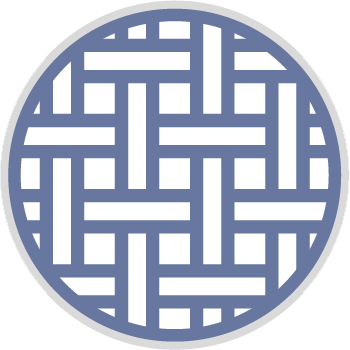
Pour les tissus d'ameublement Sherpa et Shire (et autres tissus en oléfine 100%), le traitement désinfectant suivant est recommandé pour désinfecter contre les germes et les virus, même contre le coronavirus (COVID-19).
Utilisez un javellisant domestique (qui comprend Hypochlorite de sodium 5.25% ou 6.00%–6.15% depending on the manufacturer label) diluted in water at a Rapport de dilution 1:10, which is 1,5 tasse d'eau de Javel dans 1 gallon d'eau. The use of bleach on Sherpa and Shire olefin fabric will not have a harmful effect and the recommended treatments will not void the warranty. However, it is still recommended to test the cleaning solution in an inconspicuous area first before using it throughout.
Prepare the solution fresh before each use, as bleach is sensitive to light. Also, note that bleach expires one year after production, and it can lose efficacy if not stored properly.
Remove organic soil and bulk spill matter prior to disinfecting. Disinfection requires a recommended wet contact time of 10 minutes pour être efficace. N'oubliez pas que les solutions chlorées sont corrosives et peuvent piquer le métal et endommager la peau.
Ne mélangez jamais d’eau de Javel avec un produit contenant de l’ammoniaque ou des acides.
How to Clean 100% Polyester Upholstery & Polyester Blends
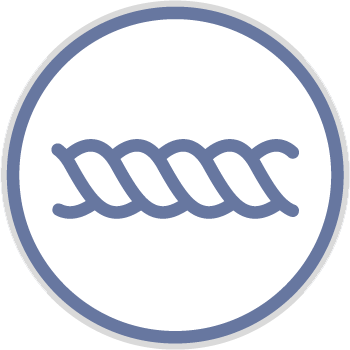
When cleaning upholstery that is manufactured with 100% polyester or polyester blends, it’s best to use hydrogen peroxide products.
We recommend using something like Clorox® Hydrogen Peroxide Cleaner & Disinfectant. This product, which is available as both a spray (for fabrics) and a wipe (for hard surfaces), will kill pathogens on both hard and soft surfaces and can eliminate bacteria and viruses in 30 seconds. This industrial-grade cleaner can be applied to a variety of fabrics, including those that are 100% polyester. This cleaner has no volatile organic compounds (VOCs), harsh fumes, bleach, or added fragrance, and the active ingredient, hydrogen peroxide, breaks down into water and oxygen upon use. Cependant, il est toujours recommandé de tester d'abord la solution de nettoyage sur une petite zone peu visible.
Sachez que les tissus en polyester et en mélange de polyester sont sensibles aux effets de l’eau de Javel. UN Solution d'eau de Javel 3% (1/3 tasse d'eau de Javel pour 1 gallon d'eau) is the highest concentration that can be used, but it cannot be guaranteed that long-term use of a bleach solution will not pose a problem.
Another recommended product for cleaning upholstery is Lysol® Clean & Fresh Multi-Surface Cleaner, which is also EPA-registered for its virus-fighting abilities and kills 99.9% of viruses and bacteria. However, the active ingredient, chlorure d'alkyl diméthyl benzyl ammonium, a été impliqué dans divers effets néfastes sur la santé, vous devez donc éviter tout contact avec la peau, toute inhalation ou toute ingestion accidentelle.
Comme pour tous les nettoyants puissants, tenir hors de portée des enfants, appliquer uniquement dans des endroits bien ventilés et laver les surfaces à l'eau claire après utilisation.
How to Clean Crypton & Nanotex Fabric
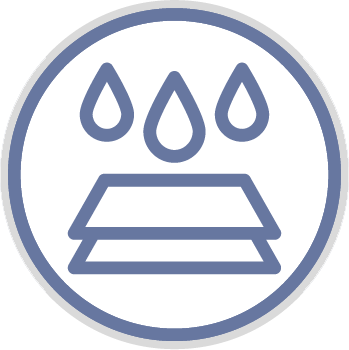
Nanotex and Crypton fabrics are multi-tiered materials with antimicrobial and stain-resistant technology and an integrated, permanent liquid barrier. Crypton’s patented moisture barrier is proven to prevent solids and liquids from permeating to the cushion below. This makes Crypton fabric one of the easiest upholstery fabrics to clean.
However, it is possible for a surface to appear clean but not be disinfected. Crypton recommends using their EPA-approved Disinfectant & Deodorizer on Crypton Barrier Fabrics. This formula is engineered for high-use, high-abuse settings. This is a one-step disinfectant cleaner that is effective against a broad spectrum of bacteria, viruses, mold, mildew, and fungus.
Best of all, this disinfectant is effective in preventing the spread of bacteria and viruses.
Pour désinfecter et nettoyer soigneusement le tissu, suivez les étapes suivantes :
- Remove spills with an absorbent cloth or paper towel. If necessary, clean heavily soiled areas with soap and water.
- Remove excess moisture and soap via vacuum or by wiping with a clean, dry cloth. Remove all soap so that it does not attract soil.
- Testez le Désinfectant et désodorisant Crypton in a small, inconspicuous area.
- Appliquer Désinfectant et désodorisant Crypton by holding it 6-8 inches from surface. Do not inhale fumes from the spray.
- Rinse the fabric with water after application.
- Allow the surface to remain wet for 10 minutes.
- After 10 minutes, wipe dry or allow to air dry.
How to Clean Woven & Coated Polyester Fabrics
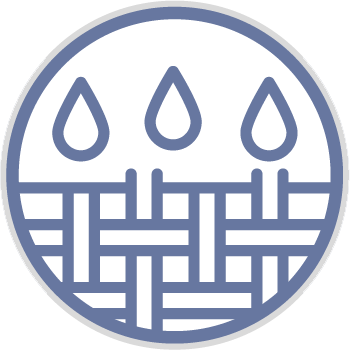
Pour l'entretien général des tissus en polyester tissés et enduits, passez régulièrement l'aspirateur sur les surfaces pour éliminer toute poussière et particules libres, nettoyez toute zone sale ou tachée et désinfectez régulièrement.
Pour désinfecter, confirmez d’abord qu’il est sécuritaire d’utiliser de l’eau de Javel sur votre produit en testant une petite zone dans un endroit discret. Mélangez une solution d'eau de Javel et d'eau propre avec un rapport de 1:10. Protégez et couvrez la structure du meuble ainsi que les zones environnantes et travaillez dans un endroit bien ventilé avec des gants et des lunettes de protection.
After disinfecting the upholstery, rinse it well multiple times with clean water. Any bleach left on the fabric may degrade or shorten the lifespan of the fabric.
How to Clean Woven & Knit Fabrics

The following list of suggested cleaners can be used to disinfect woven and knit fabrics and prevent the spread of viruses, bacteria, and other contagious illnesses. Note that these cleaning products have not been rigorously tested against all fabric types and styles, so the information that follows should be regarded as general suggestions rather than recommendations. Always test the cleaning solution first on a small, inconspicuous area.
- Spray Désinfectant Lysol
- Lingettes à base de peroxyde (différentes marques)
- Lingettes alcoolisées avec ou sans désinfectant quaternaire (différentes marques)
Instructions de désinfection :
Mouillez légèrement le tissu et laissez-le sécher à l'air libre. Notez que lors de l’utilisation de lingettes, si la couleur est transférée sur la lingette, le tissu n’est pas résistant à ce produit et ces lingettes ne doivent pas être utilisées. Évitez d'utiliser des lingettes à base d'eau de Javel, à moins que le tissu ne soit résistant à l'eau de Javel. Si vous ne le savez pas, supposez que le tissu ne peut pas être blanchi.
Désinfection en milieu de soins :
La plupart des désinfectants hospitaliers sont destinés à être utilisés sur des surfaces dures et ne conviennent généralement pas aux tissus tissés ou tricotés. Cependant, des tests limités ont été effectués avec les produits de nettoyage suivants et ils ne semblent pas affecter la couleur ou l'intégrité du tissu. Suivez attentivement les instructions de l'étiquette, en particulier concernant la dilution du désinfectant.
- Virex II 256
- Oxivir TB
- Lingettes germicides en tissu Super Sani
- Cavicide et lingettes cavicides
Instructions for disinfecting in healthcare environments:
Lightly wet the fabric surface and allow it to dry—do not saturate the fabric. If repeated applications are anticipated, rinse with clear water to prevent the buildup of chemical residue on the fabric.
How to Clean Polyurethane Upholstery
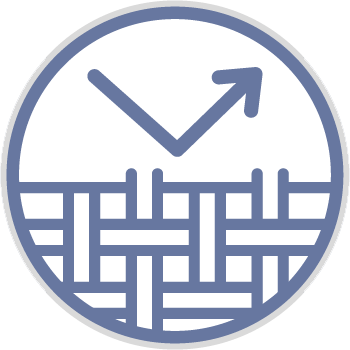
Pour l'entretien général des tissus en polyuréthane, passez régulièrement l'aspirateur sur les surfaces pour éliminer toute la poussière et les particules libres, nettoyez les zones de saleté ou de taches et désinfectez.
Traitez les taches le plus rapidement possible. Il deviendra de plus en plus difficile d’enlever une tache à mesure qu’elle durera. Retirez les substances solides ou semi-solides à l'aide d'un objet plat. Retirez autant de taches que possible, puis passez soigneusement l'aspirateur à l'aide des accessoires appropriés avant de nettoyer avec un agent.
Pre-test any cleaning method or disinfecting agent in a small, hidden, inconspicuous area to ensure it won’t damage the fabric. We recommend using several less concentrated applications of cleaning solutions rather than one concentrated application because that will be less likely to damage the fabric. You should also protect and cover the furniture framework along with surrounding areas, and work in a well-ventilated area with gloves and eye protection.
Évitez de laisser les liquides de nettoyage pénétrer à la surface du tissu. Retirez immédiatement les liquides en les tamponnant avec un chiffon propre, grand teint et absorbant.
Retirez les taches à l'aide d'une brosse douce ou d'une éponge, puis appliquez de l'eau tiède savonneuse sur la tache. Do not over-wet as this may leave a ring and soak up any remaining cleaning solution. Utilisez des mouvements légers et rapides, en commençant par l'extérieur de la tache et en progressant vers le centre. Évitez de frotter ou de frotter la zone car cela pourrait endommager le tissu. Utilisez un chiffon propre et de l'eau froide pour éliminer tout résidu.
Allow fabric to dry thoroughly and do not use heat, as that will set the stain into the fabric. As with woven and knit fabrics, rinse well after applying bleach to avoid degrading the fabric.
How to Clean Vinyl (PVC) Upholstery

To disinfect PVC (polyvinyl chloride) vinyl upholstery, we recommend using these EPA-approved solutions which have been shown to sanitize against COVID-19 and other strains of the coronavirus.
- Une solution de Javel 10% melanger avec 90% eau propre
- Chiffons Super Sani
- Virex™II, 256
Testez toujours au préalable toute méthode ou agent de nettoyage dans une petite zone cachée et discrète pour vous assurer qu’il n’endommagera pas le tissu.
Note that cleaners and disinfectants should be used in recommended dilutions and never in a concentrated form. Make sure to wipe off disinfectants with clean water and then dry the vinyl with a clean towel to remove any chemical residue that could discolor or degrade the material’s surface.
When Upholstery Cleaning Isn’t Enough
If your event chairs have started to show their age and cleaning and disinfecting aren’t doing the trick anymore, perhaps it’s time to upgrade or replace them. Browse MityLite’s catalog of durable chaises de banquet rembourrées.

Upgrade your space with new furniture. Contact a sales rep today!
